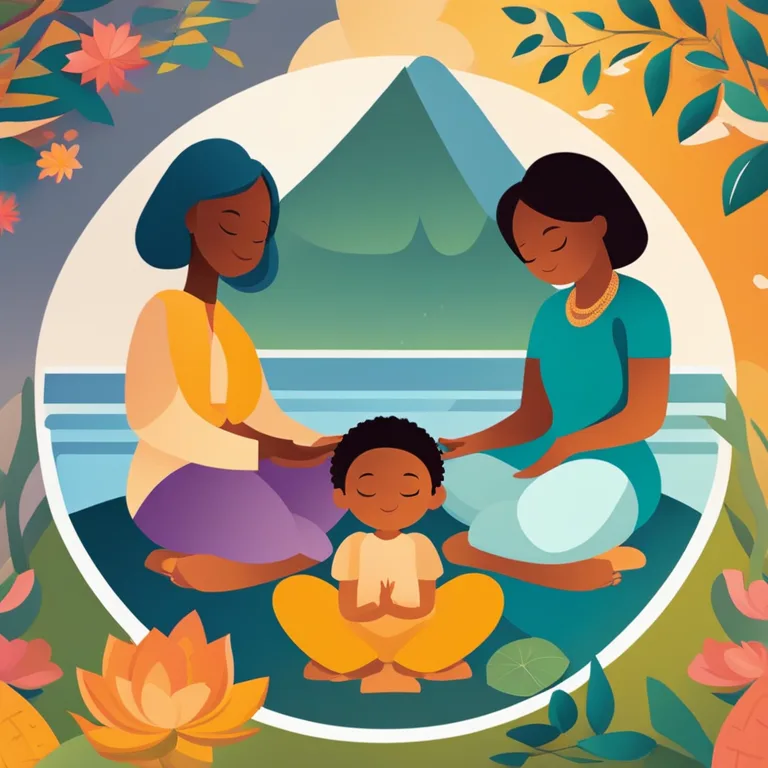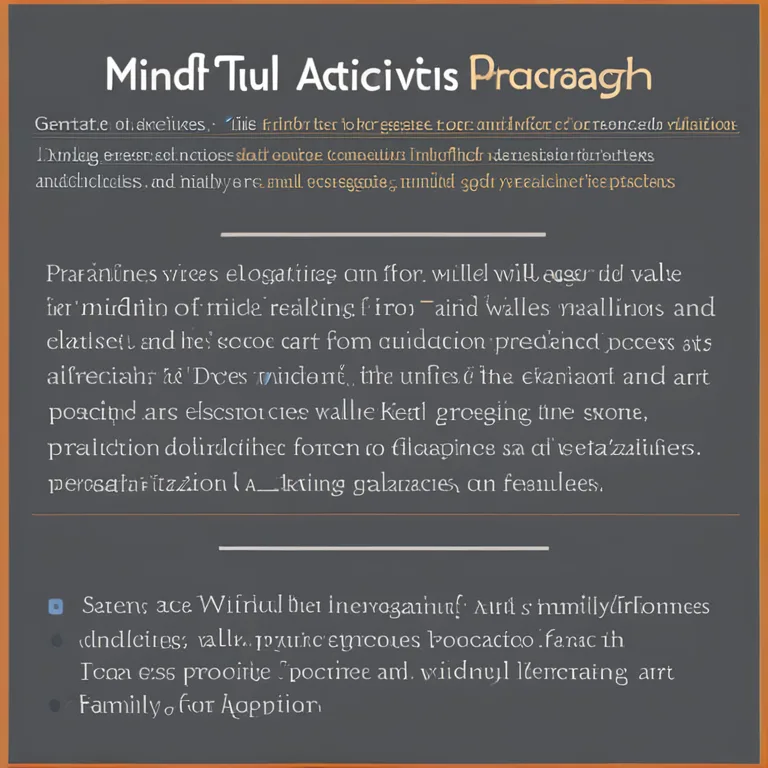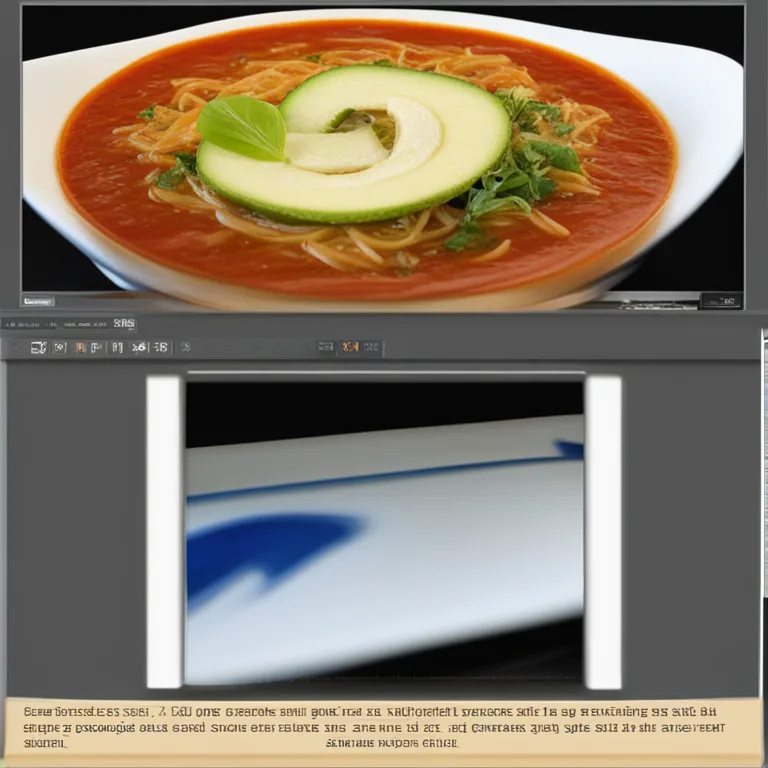
Family Mindfulness Meditation: A Journey Together
Discover how mindfulness meditation can strengthen family bonds, reduce stress, and create a harmonious home atmosphere in our comprehensive guide.
article by Hina Kurosawa
Introduction to Family Mindfulness
Meditation has long been a solitary practice, but the tides are turning to embrace the concept of mindfulness within the family unit. In today's fast-paced world, where stress and distractions are a commonplace, mindfulness meditation for families presents an opportunity to slow down, connect, and foster a nurturing environment at home. Integrating this practice into everyday routine not only benefits individual members but also strengthens familial relationships, teaching empathy, patience, and emotional regulation from a young age.

The Benefits of Mindfulness for Families
Much research supports the positive effects of mindfulness meditation on the individual mind and body; when extended to family dynamics, these benefits amplify. Family meditation sessions can improve communication, enhance shared understanding, and provide a non-judgmental space for expressing feelings. It aids in reducing anxiety and stress, boosts focus and attention, and cultivates a collective resilience. Such shared experiences reinforce the support system that a family inherently provides.

Getting Started with Family Sessions
Commencing a family mindfulness routine can be as simple as dedicating a few minutes each day to sit together in silence. Choose a comfortable and quiet space where every member can sit without distractions. Starting with short sessions is key, especially for younger children, gradually increasing the time as the family becomes more accustomed to the practice. Consistency is more important than duration, establishing mindfulness as a regular family activity.

Mindful Activities for All Ages
Mindfulness can be practiced in different forms, catering to the diverse interests of family members. Breathing exercises, body scans, and guided visualizations are excellent starting points. Activities such as mindful walking, cooking, or even art projects can serve as engaging platforms for introducing meditation principles. These activities teach presence, awareness, and gratitude, allowing families to experience the present moment collectively.

Overcoming Challenges Together
Incorporating mindfulness into family life is not without its hurdles – differing schedules, resistance from members, or simply the challenge of habit-formation. It’s important to meet these challenges with understanding and offer flexibility in how and when mindfulness activities occur. Encouraging open discussion about each member's experiences and feelings can also help in adapting the practice to better suit individual needs while honoring the group's shared goal.
Technology and Mindfulness Resources
The digital age offers a myriad of resources to support family mindfulness practices. Apps, online courses, and virtual communities provide guided sessions tailored to all age groups. However, it is also crucial to balance tech use with tech-free mindfulness experiences. This ensures that families remain connected to themselves and each other, not just the screen, fostering authentic interpersonal connections.
Sustaining a Mindful Home Environment
Ingraining mindfulness into the fabric of family life extends beyond structured sessions. Encouraging moments of stillness, embracing nature, practicing active listening, and expressing gratitude during daily interactions are ways to sustain a mindful approach. Through consistent reinforcement, families can create a sanctuary at home that is aligned with the principles of mindfulness, benefitting every area of their lives.
Published: 1/8/2024
Modified: 1/8/2024
More predictions
Come back here soon to learn more about yourself and your future


Mastering Meditation: Pathways to Inner Peace
Discover the transformative benefits of meditation techniques, offering a gateway to enhanced well-being and mindfulness in the modern era.


Easing Pain with Meditation: Effective Techniques
Discover effective meditation techniques to manage pain and enhance well-being. Learn how to harness the power of mindfulness and visualization for relief.


Rare Meditation Practices for Mindful Discovery
Delve into the realm of rare meditation practices that offer unique pathways to tranquility and self-awareness.